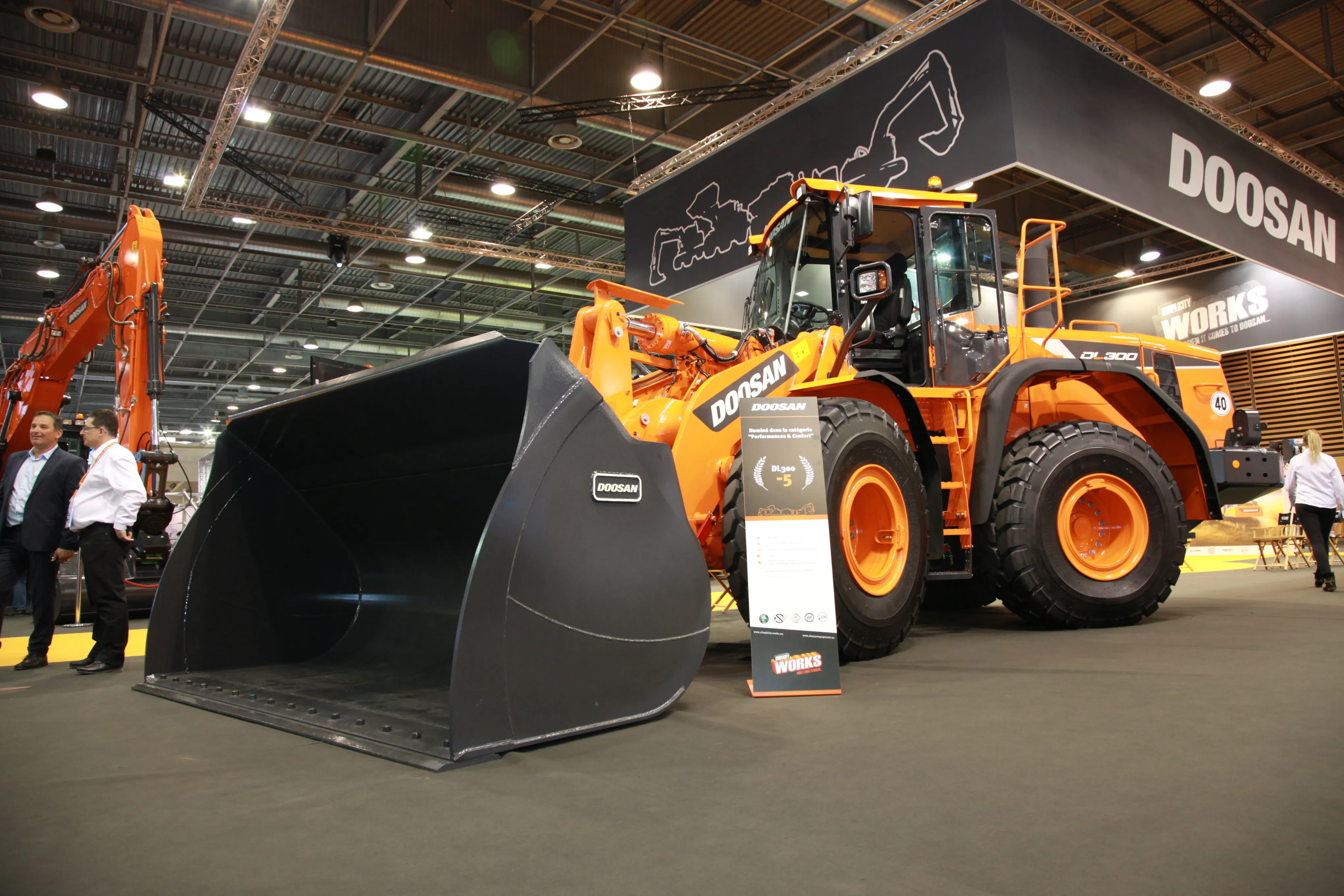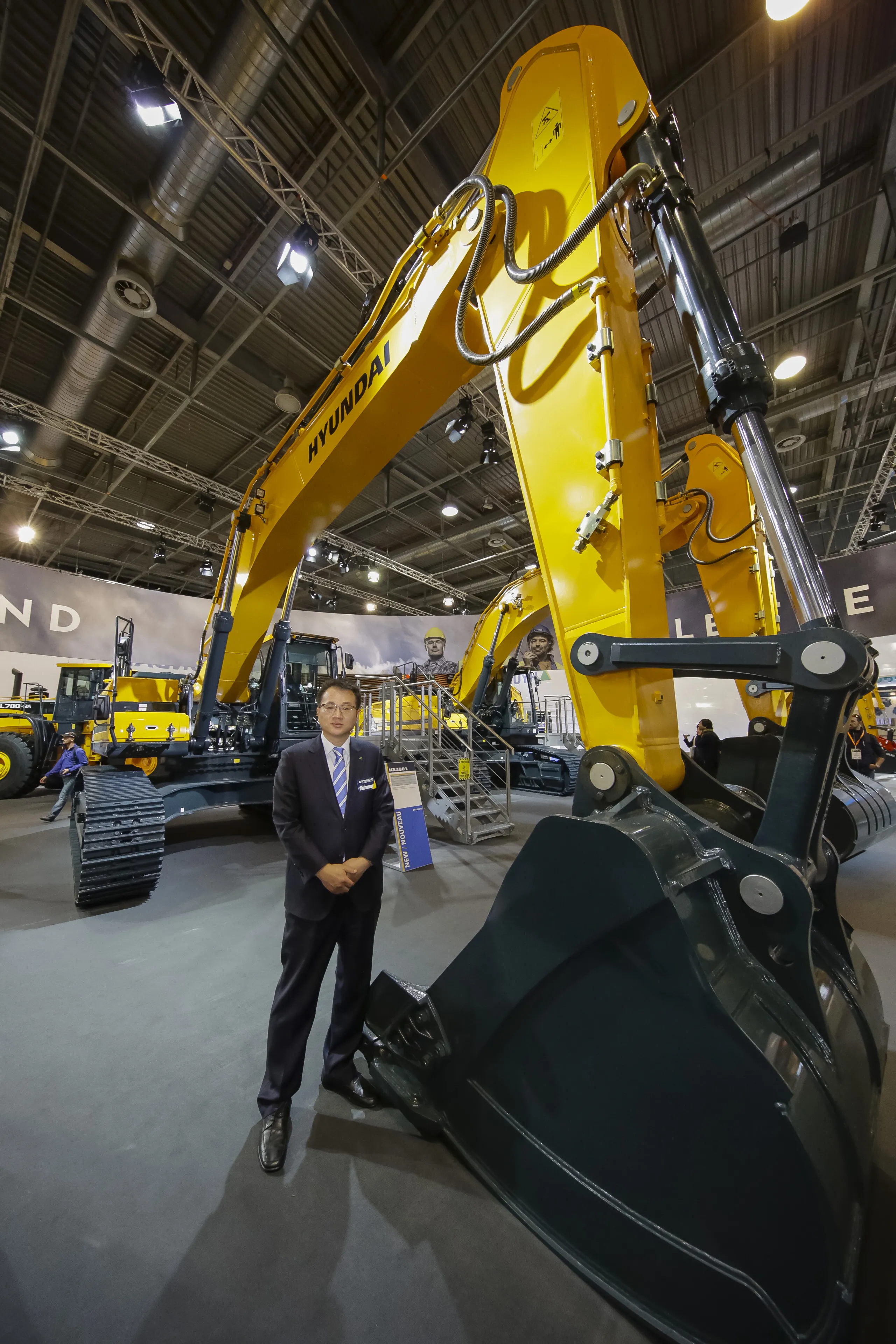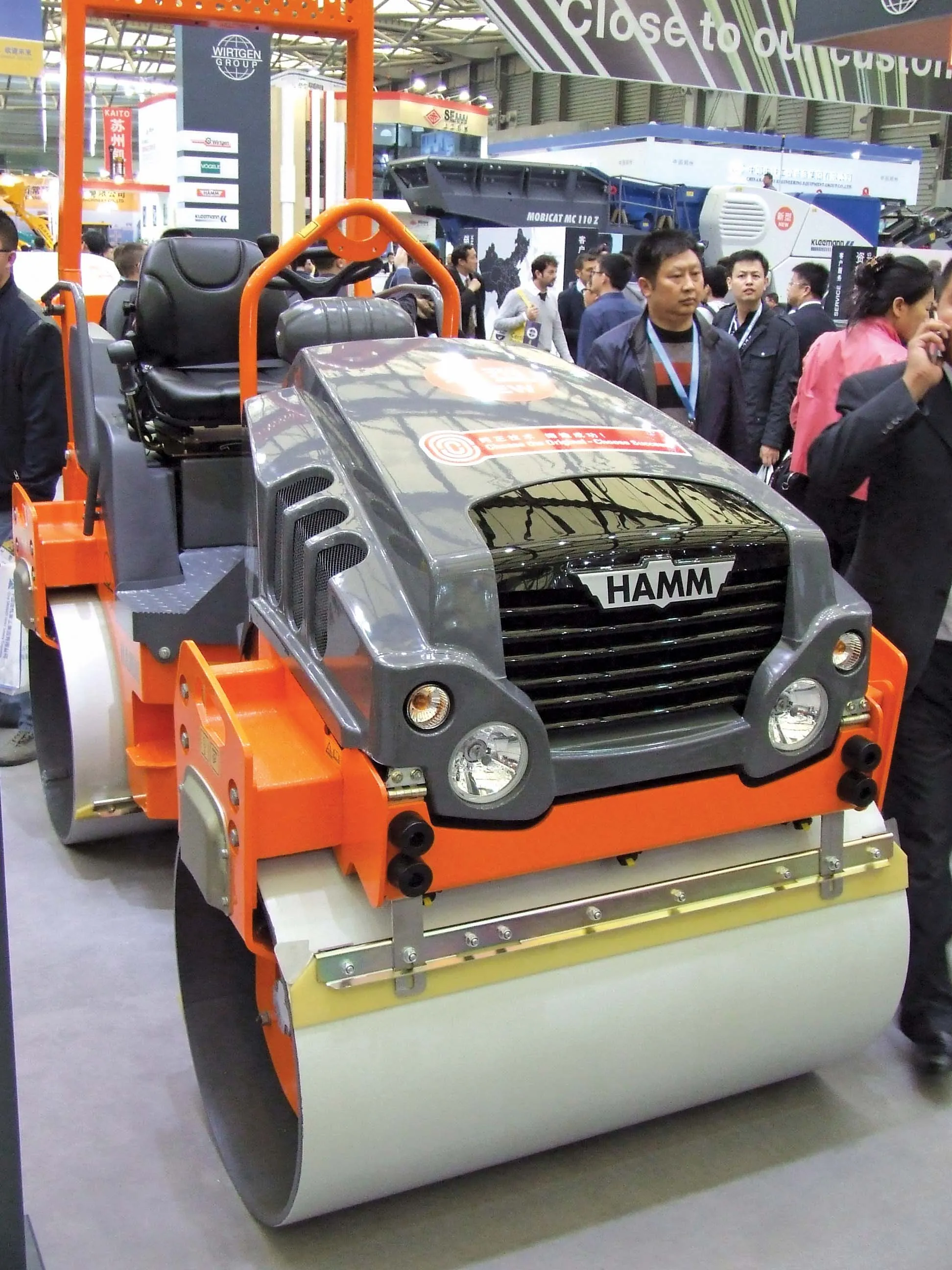INTERMAT sees the birth of Doosan’s latest arrival, the DL300-5 baby wheeled loader, the smallest machine in the South Korean firm’s DL-5 generation.
Doosan’s launch of the 300-5 at Intermat comes only a few weeks after it unveiled the largest wheeled loader in the family, the DL550-5. This was also on display at the Paris exhibition. In between are the 350, 420 and 450, says Doosan’s wheeled loader product manager Sebastien Claude.
The 300-5 series, which replaces the Stage IIIB DL-3 series launched
January 6, 2017
Read time: 3 mins

INTERMAT sees the birth of 695 Doosan’s latest arrival, the DL300-5 baby wheeled loader, the smallest machine in the South Korean firm’s DL-5 generation.
Doosan’s launch of the 300-5 at Intermat comes only a few weeks after it unveiled the largest wheeled loader in the family, the DL550-5. This was also on display at the Paris exhibition. In between are the 350, 420 and 450, says Doosan’s wheeled loader product manager Sebastien Claude.
The 300-5 series, which replaces the Stage IIIB DL-3 series launched in 2012, uses Stage IV/Tier 4 Final compliant Scania engines plus a 9VGT turbocharging with exhaust braking.
The DL 300-5 features a Scania DC09 5-cylinder diesel engine, rated at 202kW at 1800rpm, offering good torque levels at a low rpm, all of which translates into a potential 10% fuel saving says Claude. It all runs into a ZF powertrain with axle cooling and auxiliary hydraulic connections. Engine speed variation is reduced via smaller gear ratios and the lower average engine speed throughout the whole drive range further helps to reduce fuel consumption.
Cab design has been kept clean and simple, says Claude, with the old-fashioned rocker switches replaced by a multi-selection touch pad. Accurate and smooth joystick controls provide further comfort.
Drivers with long legs will appreciate the DL300-5’s “office” because a new steering column design allows more clearance for the operator’s legs and knees. The steering wheel can also be tilted and moved telescopically to match the operator’s preferred position. Driver safety is also enhanced with a cab that meets ROPS/FOPS regulations. There is also a wide emergency exit for fast and easy evacuations.
Cab air is filtered twice to eliminate particles larger than 2 microns in size and the fully automatic climate control system adjusts the air temperature and fan.
The Doosan wheeled loaders (the 300, 350 and 420) all feature the new CoreTMS system – designed specifically for the Doosan range. It provides comprehensive information about machine performance in dual satellite and mobile network modes. The web-based fleet and asset management solution which is very useful for manages performance and security of machines and promotes preventative maintenance.
The new cab also features a full-colour LCD panel suitable for day and night work. The user-friendly monitor has two customisable screen displays to suit the operator’s preference, giving a full readout of machine settings and maintenance data. The rear-view camera greatly enhances visibility and safety. The screen in the cab also helps the operator judge distances and monitors things like light intensity control, viewing angle control, language setting and power on/off setting.
All the new generation Doosan wheel loaders are equipped with a Torque-converter-lock-up (TCLU) system which, when activated, is switched on automatically. The lock-up provides a direct drive between the engine and transmission, enabling 100% torque delivery without any loss from 2nd gear up to the top 5th gear.
There is also an ICCO (Intelligent-clutch-cut-off) system that allows the transmission output torque to be cut off according to the angle of the brake pedal, preventing unnecessary power use during braking, which in turn reduces brake wear and heat generation, while extending the oil change interval and promoting better fuel economy. Outboard disc brakes enable easy servicing without dismounting the axles. The parking brake switch includes a safety unlock trigger and when the engine is turned off, this brake is automatically engaged and not released when the engine is started.
Doosan’s launch of the 300-5 at Intermat comes only a few weeks after it unveiled the largest wheeled loader in the family, the DL550-5. This was also on display at the Paris exhibition. In between are the 350, 420 and 450, says Doosan’s wheeled loader product manager Sebastien Claude.
The 300-5 series, which replaces the Stage IIIB DL-3 series launched in 2012, uses Stage IV/Tier 4 Final compliant Scania engines plus a 9VGT turbocharging with exhaust braking.
The DL 300-5 features a Scania DC09 5-cylinder diesel engine, rated at 202kW at 1800rpm, offering good torque levels at a low rpm, all of which translates into a potential 10% fuel saving says Claude. It all runs into a ZF powertrain with axle cooling and auxiliary hydraulic connections. Engine speed variation is reduced via smaller gear ratios and the lower average engine speed throughout the whole drive range further helps to reduce fuel consumption.
Cab design has been kept clean and simple, says Claude, with the old-fashioned rocker switches replaced by a multi-selection touch pad. Accurate and smooth joystick controls provide further comfort.
Drivers with long legs will appreciate the DL300-5’s “office” because a new steering column design allows more clearance for the operator’s legs and knees. The steering wheel can also be tilted and moved telescopically to match the operator’s preferred position. Driver safety is also enhanced with a cab that meets ROPS/FOPS regulations. There is also a wide emergency exit for fast and easy evacuations.
Cab air is filtered twice to eliminate particles larger than 2 microns in size and the fully automatic climate control system adjusts the air temperature and fan.
The Doosan wheeled loaders (the 300, 350 and 420) all feature the new CoreTMS system – designed specifically for the Doosan range. It provides comprehensive information about machine performance in dual satellite and mobile network modes. The web-based fleet and asset management solution which is very useful for manages performance and security of machines and promotes preventative maintenance.
The new cab also features a full-colour LCD panel suitable for day and night work. The user-friendly monitor has two customisable screen displays to suit the operator’s preference, giving a full readout of machine settings and maintenance data. The rear-view camera greatly enhances visibility and safety. The screen in the cab also helps the operator judge distances and monitors things like light intensity control, viewing angle control, language setting and power on/off setting.
All the new generation Doosan wheel loaders are equipped with a Torque-converter-lock-up (TCLU) system which, when activated, is switched on automatically. The lock-up provides a direct drive between the engine and transmission, enabling 100% torque delivery without any loss from 2nd gear up to the top 5th gear.
There is also an ICCO (Intelligent-clutch-cut-off) system that allows the transmission output torque to be cut off according to the angle of the brake pedal, preventing unnecessary power use during braking, which in turn reduces brake wear and heat generation, while extending the oil change interval and promoting better fuel economy. Outboard disc brakes enable easy servicing without dismounting the axles. The parking brake switch includes a safety unlock trigger and when the engine is turned off, this brake is automatically engaged and not released when the engine is started.









